3 Days in Hanoi: The Perfect Hanoi Itinerary – Road Affair
Road Affair is reader-supported and may earn commission from purchases made through links in this article.
A visit to the beautiful southeast Asian nation of Vietnam would not be complete without a bit of time in its capital city of Hanoi. Bursting with history and culture, Hanoi is both a city embracing the past and moving into the future. For those planning a trip through Vietnam, Hanoi is the perfect place to get a feel for what life is like in Vietnam and learn about local culture, history, and cuisine.
Though it is the country’s capital, the city is not so large and overwhelming that you need a full week to cover it all. In fact, three days is more than enough time to cover the best things to do in Hanoi. The trick though is to have a good Hanoi itinerary that you can follow so you don’t miss any of the important sights or attractions. With this guide in-hand you won’t have any problems working out what to do in Hanoi in 3 days.
Mục Lục
Best Time to Visit Hanoi
One of the most important steps when planning a trip to Hanoi is deciding what time of year you’ll visit. In a destination like Hanoi, weather and the number of tourists can drastically affect how much you enjoy the city. The best time to visit Hanoi will not only depend on how much you want to avoid high season but also what kind of weather you find most comfortable.
While much of southeast Asia experiences hot and tropical weather year round, Hanoi has two seasons, a hot and humid summer, and a cool, dry winter. The hot and wet weather in Hanoi lasts from May to October. July through September is the period with the highest temperatures and the most rainfall. Unless you’re used to high humidity and like to go sightseeing in rain, these months are best avoided. The idea of winter in Hanoi might seem strange, but you’d be surprised how cold the city gets from January to March. You certainly won’t want to wear shorts and sleeveless t-shirts during these colder months.
High season in Hanoi is the shoulder months between summer and winter when most tourists choose to visit. During November and December, as well as the spring months of March and April, the city’s weather is at its best with heat that is not yet uncomfortable. The only downside to this time of year is that prices go up due to increased demand.
Check flights to Hanoi from the USA (from $432) and UK (from £329)
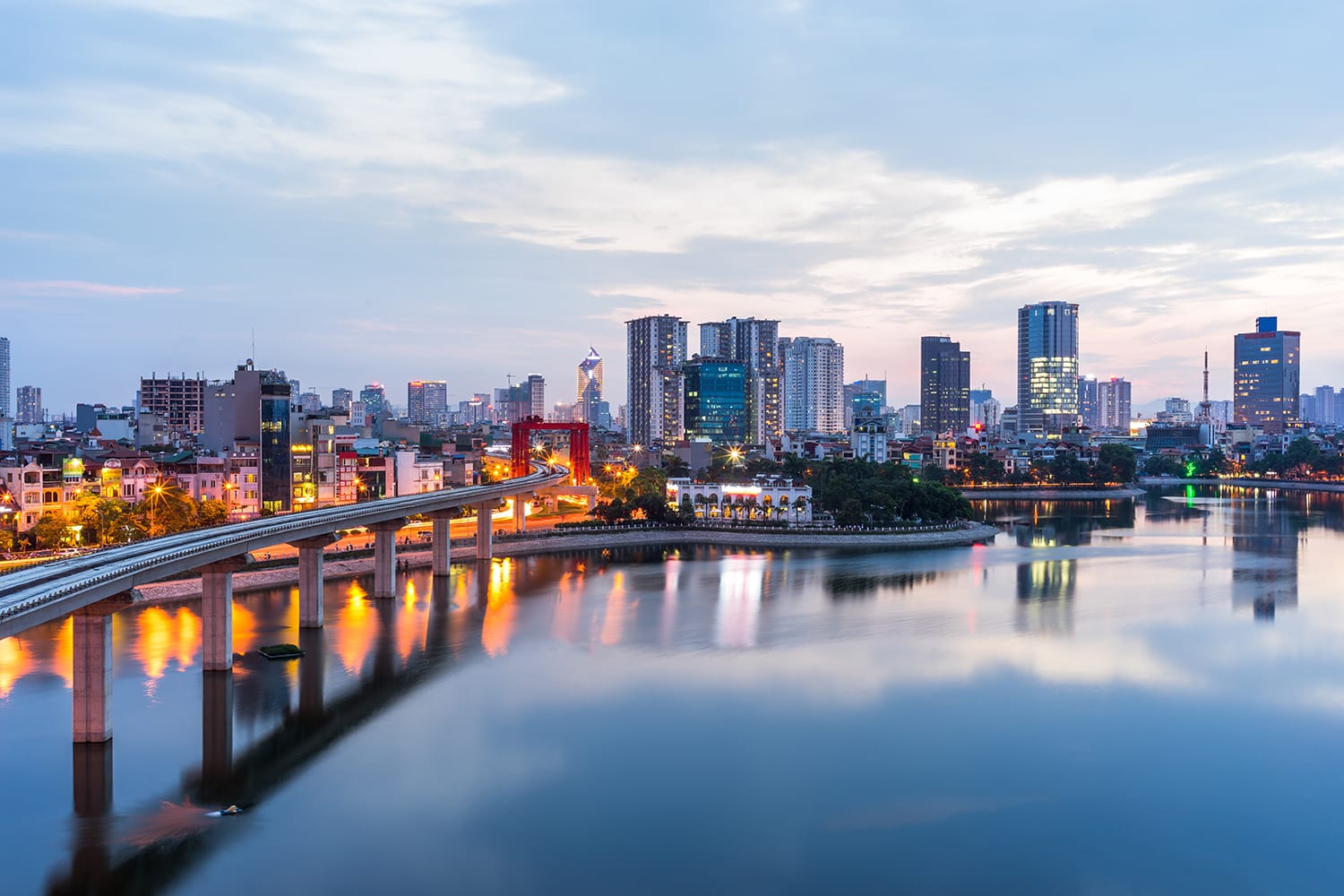 Vietnam Stock Images / shutterstock.com
Vietnam Stock Images / shutterstock.com
How to Get Around Hanoi
With so much to see in Hanoi, one thing you’re going to need to think about is how to get from one attraction to the next. The good news for those visiting Hanoi is that there are options for all travel styles and budgets.
Since many of the city’s central attractions are conveniently close together, the simplest way to get around Hanoi is by walking. But for longer distances or times when the weather is too hot, cold, or rainy, you may want to consider other transport.
The city of Hanoi is home to both motorcycle taxis, known locally as xe om (pronounced “say ohm”), and regular taxis. Motorcycle taxis are readily available, but make sure they have appropriate safety equipment and be sure to agree on prices up front. Regular taxis are not too expensive, but do insist they use the meter to avoid getting overcharged. We recommend you stick to reputable and reliable taxi companies such as Hanoi Group Taxi and Mai Linh Taxi. With Hanoi’s traffic, you may find that motorcycle taxis have an easier time getting through traffic jams.
Unfortunately, taxi drivers in Hanoi are known for scamming tourists so it is best to avoid them if at all possible. The better option is to get around by Grab, an Uber-like service based in Southeast Asia. Not only do you not have to worry about getting ripped off but Grab is often times even cheaper than a metered taxi.
To get into the city center from Hanoi’s Noi Bai International Airport. Taxis/Grab and private transfers are the fastest way but will also be the most expensive. A cheaper and slower option is to take the 7 bus to Kim Ma bus station or the 17 bus to Long Bien bus station. The trip will take about an hour and costs 9,000 VND which must be paid in cash to the driver. Another way to get from the airport into the center is to use the shuttle bus service provided by airlines like Jetstar Asia, Vietnam Airlines, and Vietjet.
Where to Stay in Hanoi
Booking a place to stay is always one of the most pressing details on travelers minds, so here are some options of where to stay in Hanoi. Since Hanoi is a popular destination among tourists of all types, you should have no problem finding a place to stay that works for you.
The biggest factor in determining the best places to stay in Hanoi is knowing in which part of the city you should be looking. You’ll naturally want somewhere central that is close to attractions, restaurants, nightlife, and other important facilities. Typically, tourists focus on Hanoi’s Old Quarter for accommodation, though more luxurious digs are often situated in the French Quarter.
If you’re looking for style and class in Hanoi, you’ll find it at the Sofitel Legend Metropole Hanoi. This five-star hotel in the French Quarter is lavishly designed in classic French decor fused with local flair, while offering restaurants, a cocktail bar, and a whiskey lounge.
If you’re after comfort without breaking the bank, the four-star JM Marvel Hotel & Spa is perfect for your Hanoi getaway. Reasonably priced with beautifully styled rooms and right in the Old Quarter, you couldn’t ask for more.
You might be surprised to learn that Airbnb is another great way to find affordable places to stay in Hanoi, especially if you use our link to potentially get up to $40 off your next Airbnb booking.
You won’t have any problem finding budget accommodation but one of your best options is the Hay Hostel, which provides cheap dorms and private rooms in a friendly and comfortable environment. What’s more, breakfast is included in the rate and you’re already right in the heart of the city. Is Hay Hostel fully booked? Check out our list of the best hostels in Hanoi here.
For more accommodation options in Hanoi check out Booking.com. They continuously offer the best rates and their custom service is on point.
The Perfect 3-Day Hanoi Itinerary
Three days is the perfect amount of time to experience the best of Hanoi and its attractions. From the city’s most beautiful spots to landmarks steeped in history, Hanoi has something to appeal to everyone. Plus you’ll want to try as much of the awesome local food as possible during your 3 days in Hanoi.
During your time in the city, you’ll have a chance to explore all the most important areas of Hanoi. While the center of the city focuses on the beloved Old Quarter and impressive French Quarter, more of Hanoi’s sights are located west, past the train station and right up to the vast West Lake. In fact, with 3 days you’ll even have time to visit the remarkable region of Ninh Binh with all its religious, historical, and natural attractions.
However, before we get to our Hanoi itinerary, we just wanted to remind you to purchase travel insurance. You never know what will happen and, trust us, you do not want to get stuck with thousands of dollars in medical bills. As a wise man once said, “If you can’t afford travel insurance, you can’t afford to travel.” So don’t leave home without it.
We personally use and recommend SafetyWing. For only around $10 a week, it’s really a no-brainer. You can get a quick, non-binding quote below:
Even if you don’t get travel insurance with SafetyWing, please make sure to get travel insurance from somewhere. One popular alternative, for example, is World Nomads.
So have a look into this Hanoi travel itinerary and you’ll be able to see exactly how you can comfortably explore Hanoi in 3 days.
Day 1 in Hanoi
Your first day in Hanoi is going to focus mostly on the attractions that are found in the central neighborhoods of the city. As you go, you’ll experience some of the best places to visit in Hanoi.
Lake Ho Hoan Kiem
The perfect place to start a visit in Hanoi is at Lake Ho Hoan Kiem. It’s hard to miss this large lake in the center of Hanoi, as it not only has sights you’ll want to see but is a general hive of activity. Lake Ho Hoan Kiem is a popular meeting spot near the city’s Old Quarter, with both locals and tourists keen to soak in it’s calm atmosphere. As you walk around the lake, you’re sure to spot people exercising, practicing tai chi, and might even encounter students seeking out visitors to help them practice their English.
Sitting out isolated and alone in the water, Turtle Tower is the signature sight of the lake. Continue around and you’ll find landmarks that you can actually reach, starting with the beautiful red Húc bridge and the Temple of the Jade Mountain. This temple is dedicated to several important historical figures, from a scholar to a soldier, and also houses the preserved remains of a giant turtle.
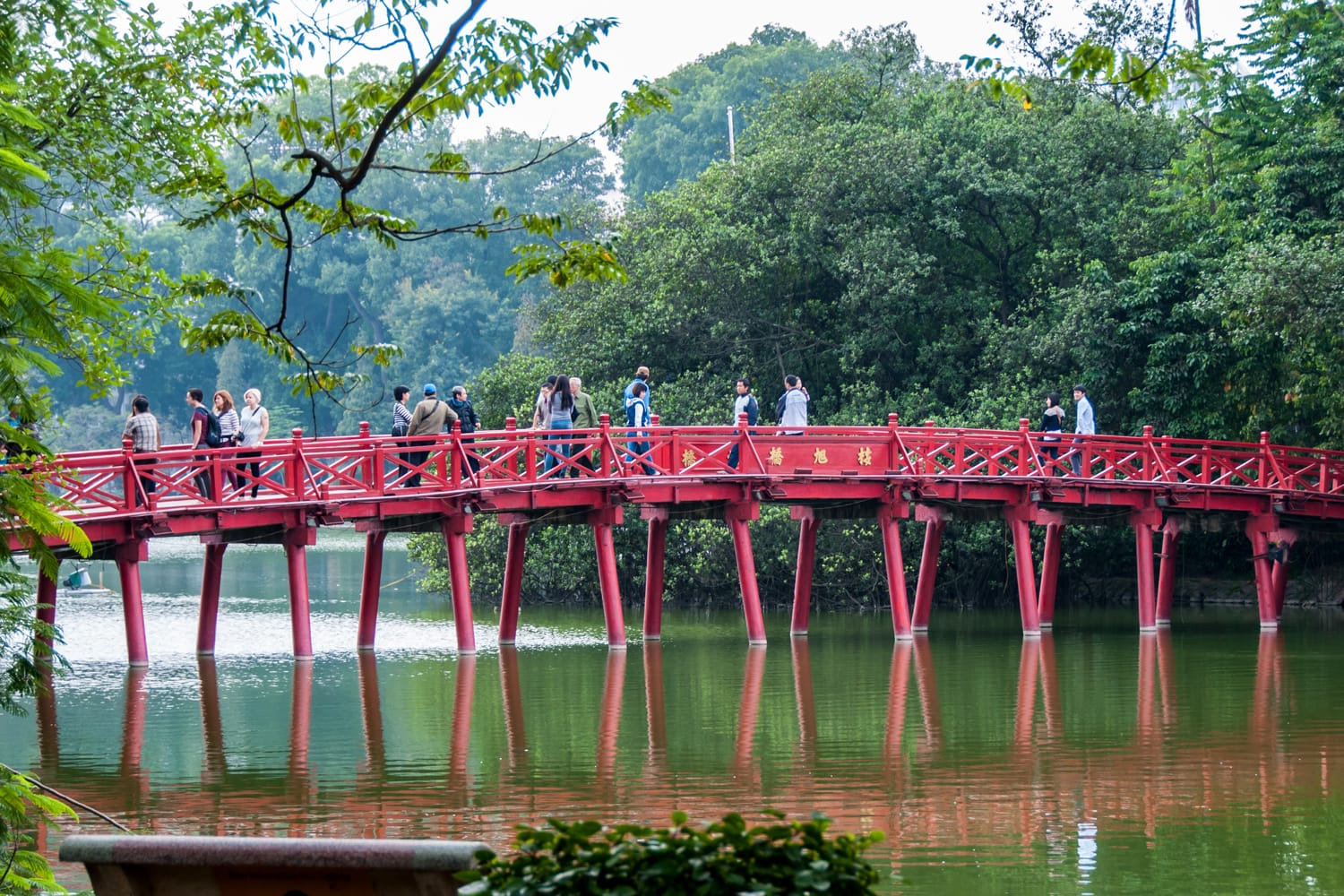 Stefano Barzellotti / shutterstock.com
Stefano Barzellotti / shutterstock.com
Hanoi Old Quarter
Spreading north and west from Lake Ho Hoan Kiem you’ll find Hanoi’s ever-impressive Old Quarter. The historical center of the city, is a large network of criss-crossing streets which were once home to the city’s trade guilds. In the past, all the tradesmen of a single craft would gather together in one street and many of the Old Quarter’s streets were dedicated to a single trade or guild. This practice has survived over the years and it can be fun to walk down each new street to see what wares are sold there.
Mixed among all this you’ll spot temples, gates, and halls dating back centuries. Two sights that show you wildly different sides of Hanoi are the grey, Gothic Saint Joseph Cathedral and the well-preserved, traditional Ancient House.
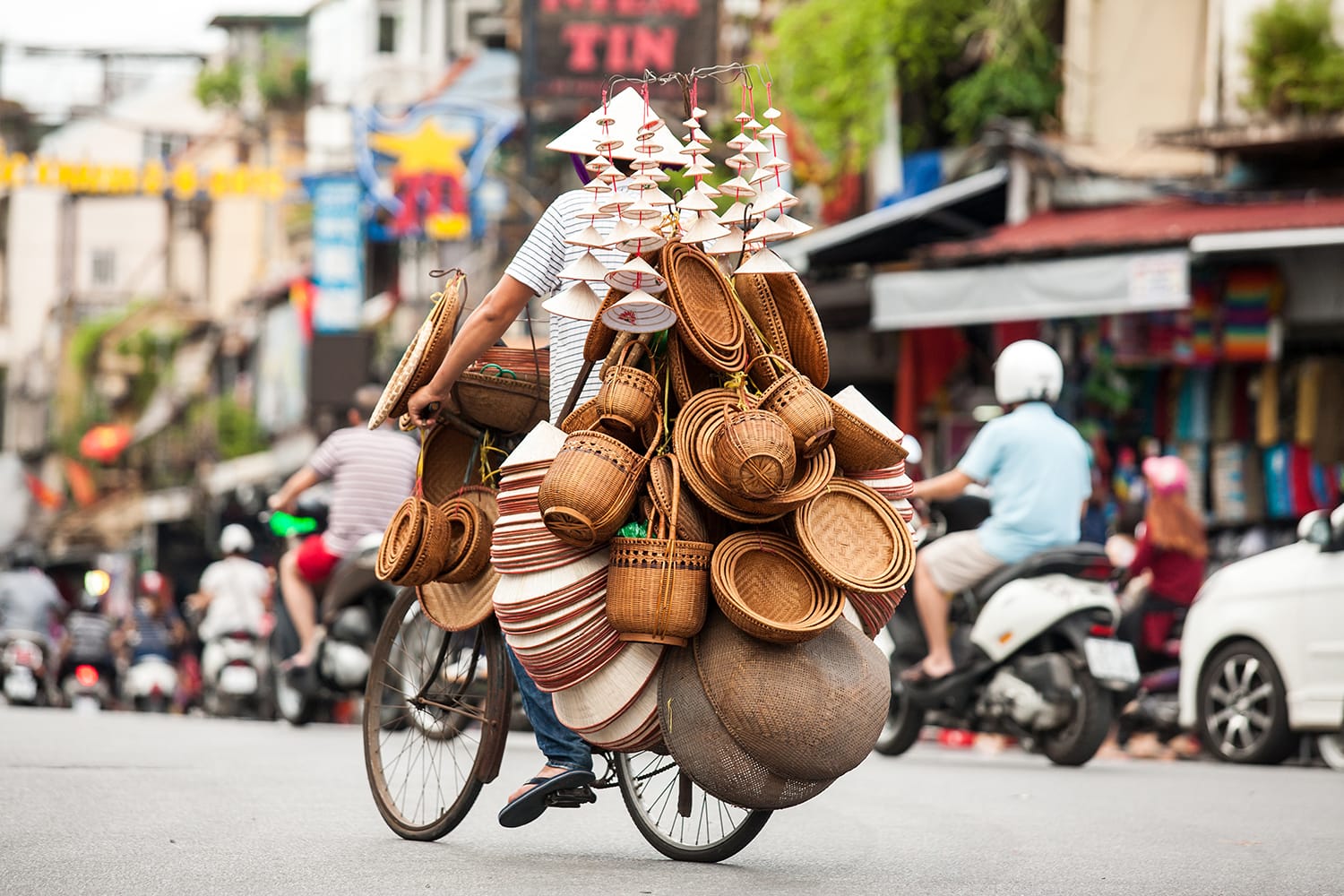 Tony Duy / shutterstock.com
Tony Duy / shutterstock.com
Temple Of Literature
Next, as we explore Hanoi it’s time to seek out the storied past of the Temple of Literature. As important to locals now as it was almost 1,000 years ago, this isn’t a place of religion but rather one of study. Constructed in 1070, the temple was originally part of a university designed for scholars and students of Confucius.
Over the centuries it has seen countless graduations and you may even see current students posing for graduation photos if you come at the right time of year. With walking paths, ponds, and courtyards to wander through, the temple is both tranquil and beautiful.
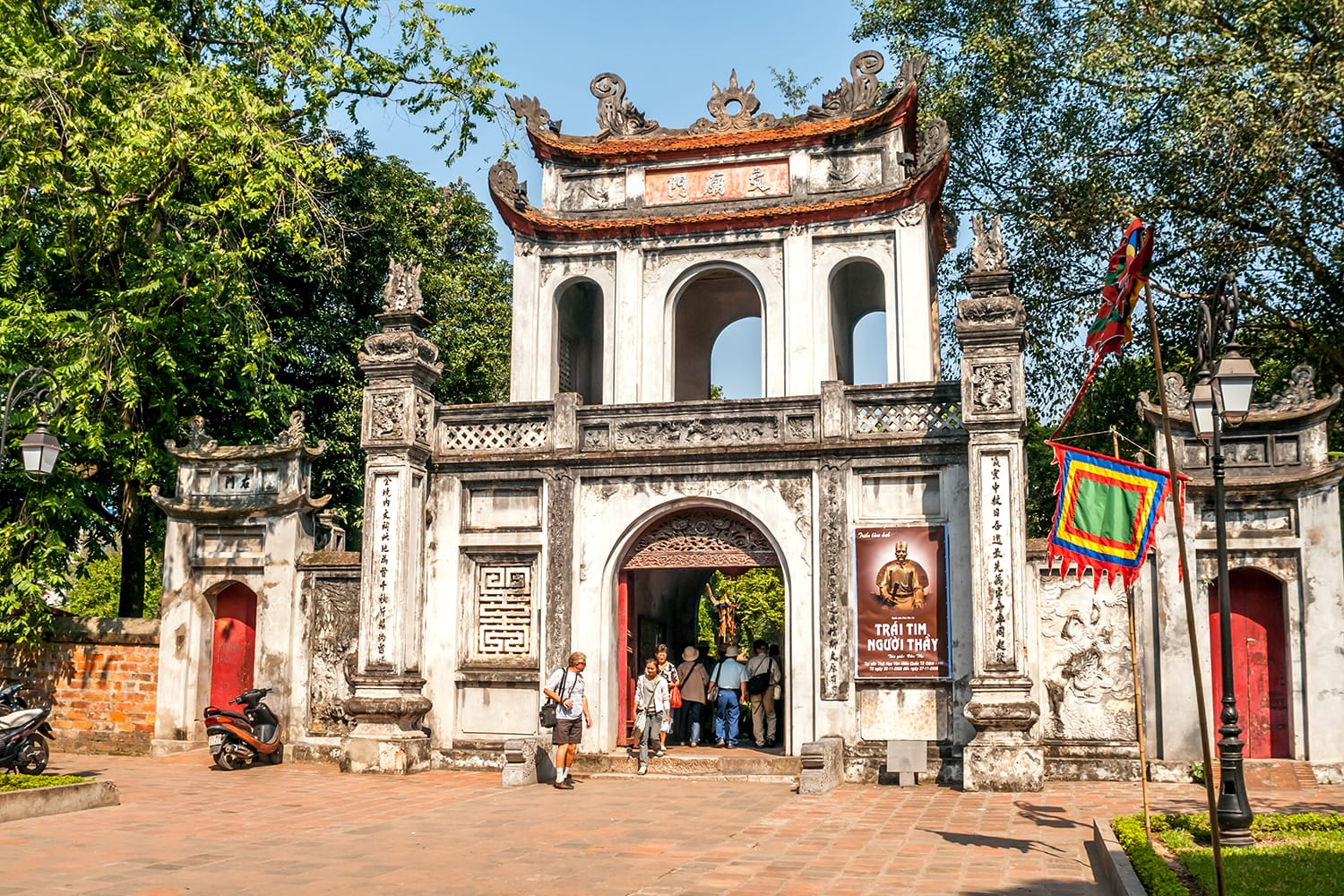 milosk50 / shutterstock.com
milosk50 / shutterstock.com
Hoa Lo Prison Memorial
It’s impossible to ignore the history of Vietnam on a visit to Hanoi, and one place which most visitors make time to see is the Hoa Lo Prison. Now a memorial, this prison is best known for holding US prisoners of war which earned it the nickname the “Hanoi Hilton”. But the prison was actually in use before that, housing Vietnamese political prisoners during the days of French colonialism.
Visit inside and you’ll be taken through the history of the prison as seen from a Vietnames nationalist perspective. Walking through the prison will give you some insight into the life of prisoners there, as well as how Vietnam’s history is presented today.
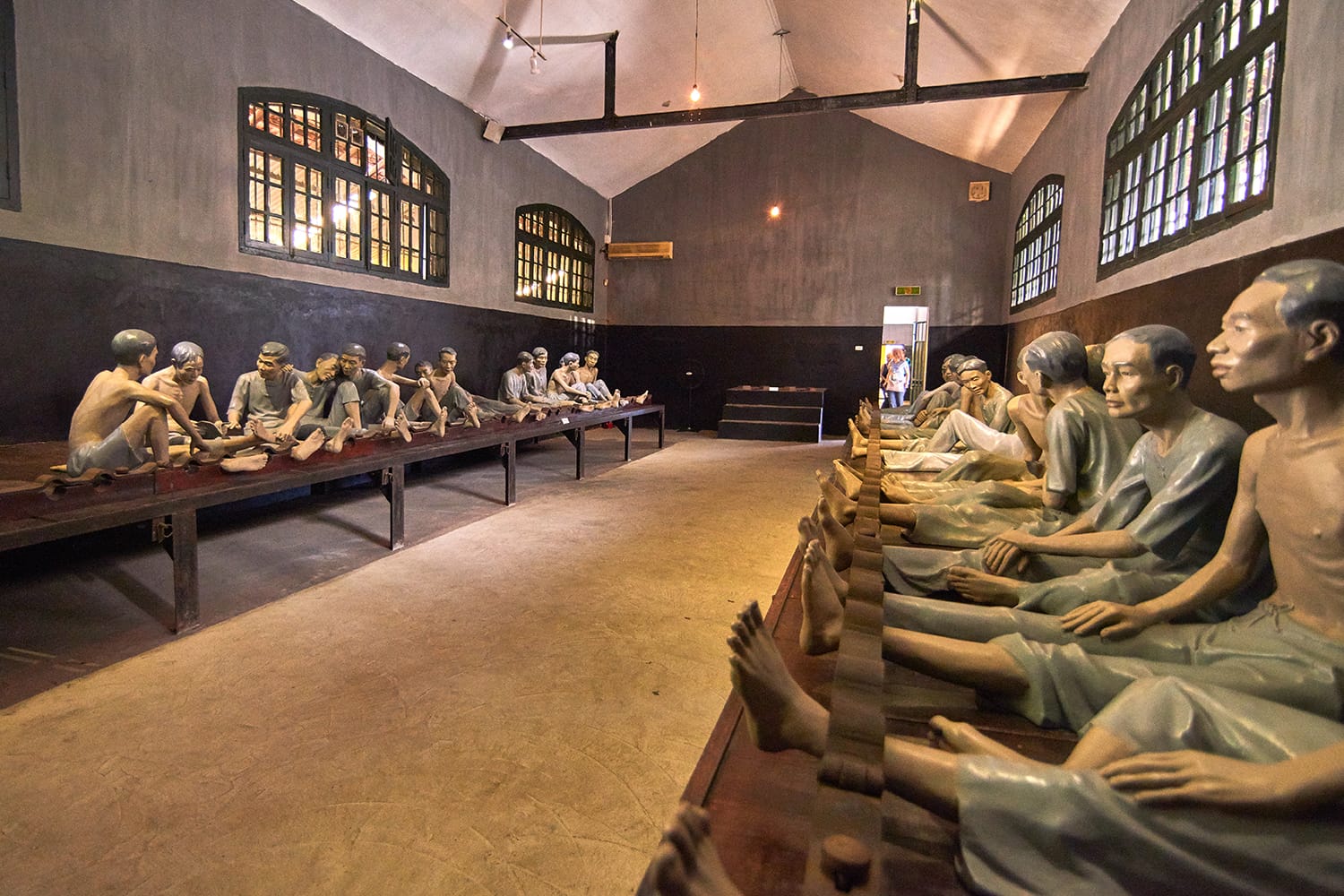 Danny Iacob / shutterstock.com
Danny Iacob / shutterstock.com
Hanoi Train Street
One of the most curious and picturesque spots in Hanoi is the city’s so-called “train street”. In the Old Quarter train tracks squeeze through some of the city’s more narrow streets, with the doors of people’s homes opening out onto them. Twice a day a large train makes its way through this residential area, with residents squeezing into doorways to keep clear. Even if you visit when the train isn’t there, the neighborhood offers an interesting insight into what life is like for some residents of Hanoi.
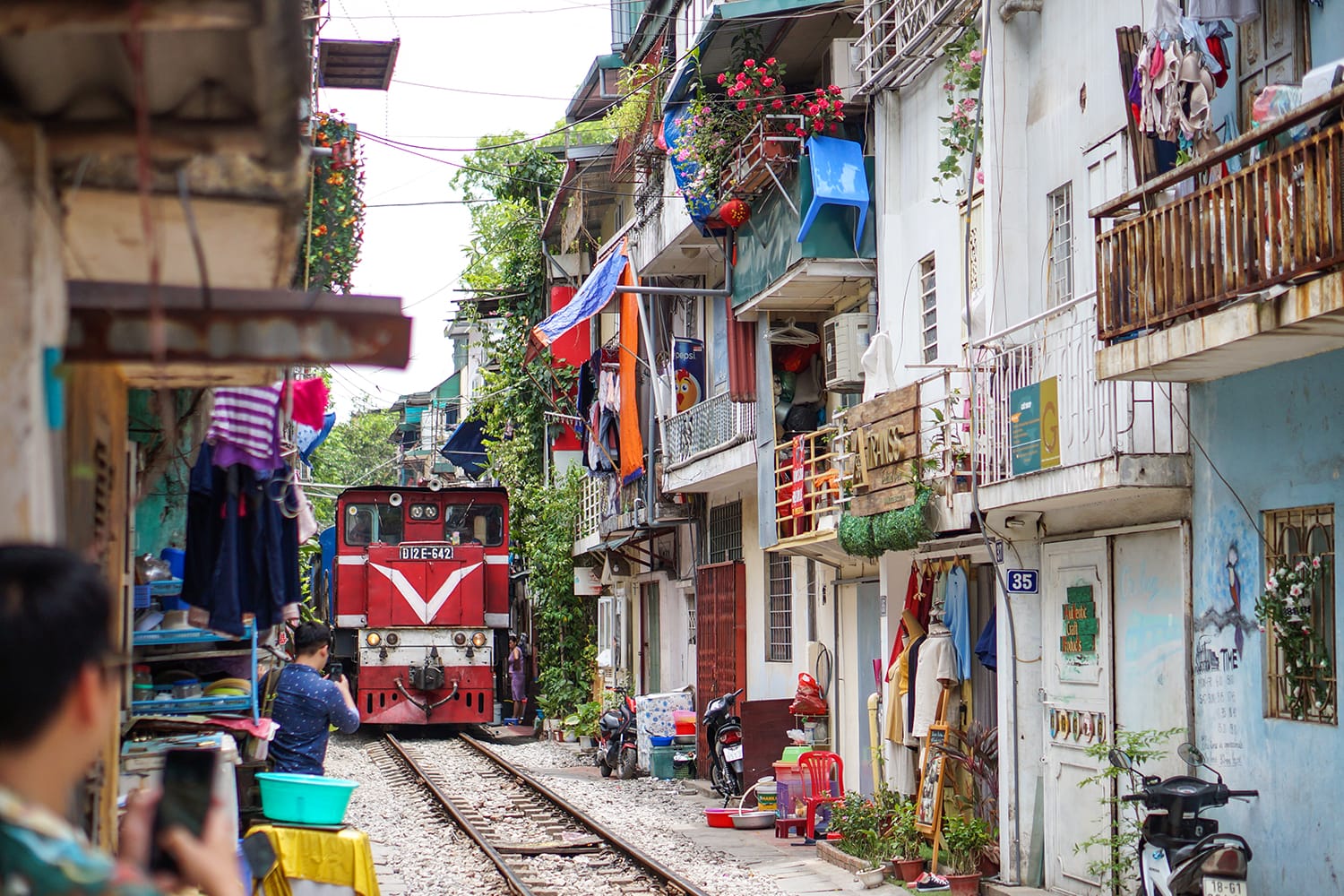 il project / shutterstock.com
il project / shutterstock.com
French Quarter
To see a totally different side of Hanoi, you’ll want to make your way down to the city’s French Quarter. Loaded with buildings and architecture from the days of French colonialism, this can feel like you’ve stepped into a completely different city. Here you trade in humble homes and merchant streets for grand government buildings, boutique shopping, and plenty of high-end hotels, restaurants, and nightlife venues. You won’t find too many actual attractions in this part of Hanoi but if you like the finer things then this might be your kind of place.
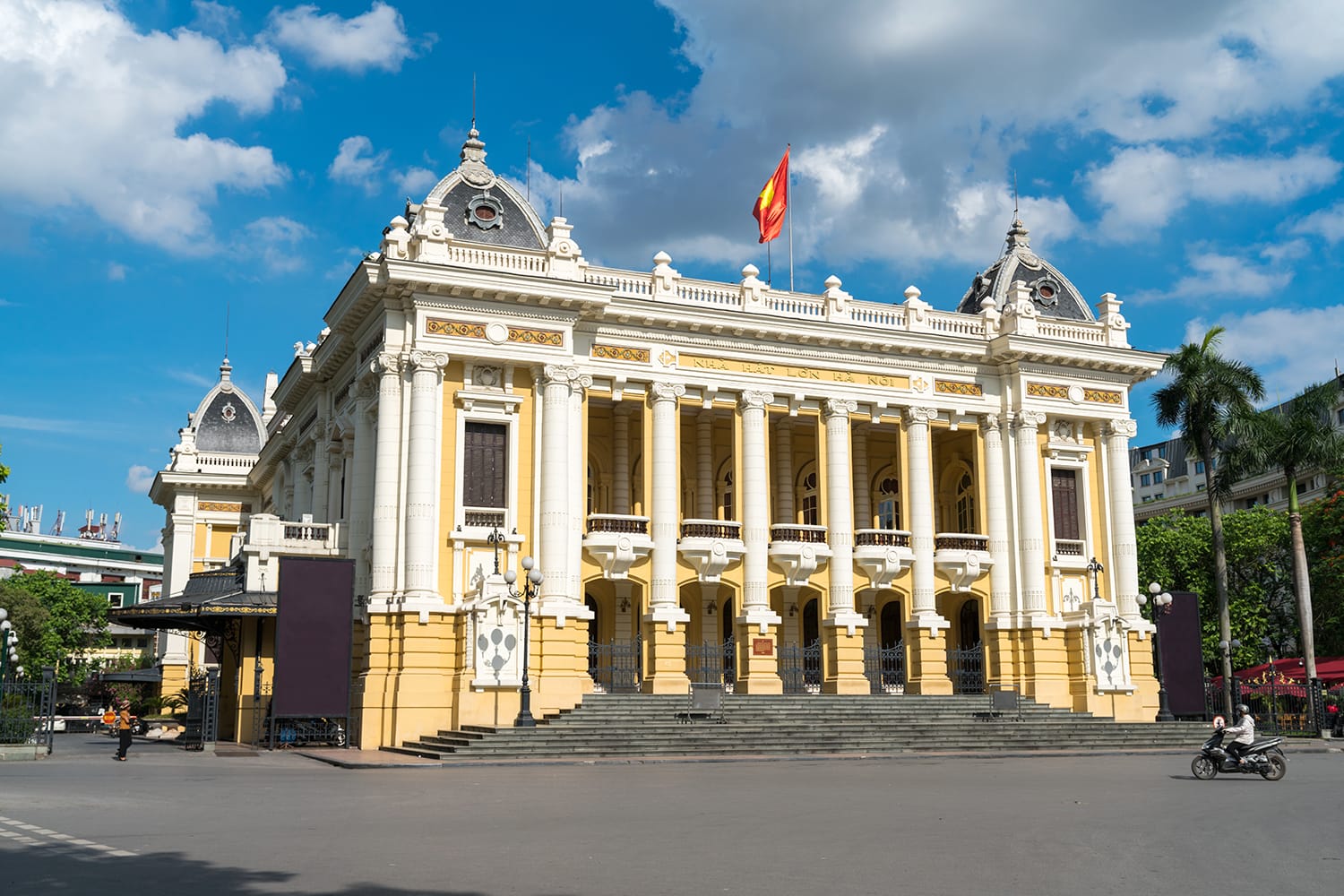 Vietnam Stock Images / shutterstock.com
Vietnam Stock Images / shutterstock.com
Dong Kinh Nghia Thuc Square
Hanoi can be a lively and hectic city at times, so a nice way to end your first day is by taking a step back from it all. To do so, head for the ever-busy roundabout in Dong Kinh Nghia Thuc Square, find a bar or restaurant overlooking the chaos and simply watch the world go by. If you’re feeling peckish, you should have no problem finding street vendors close-by serving up fresh food at bargain basement prices.
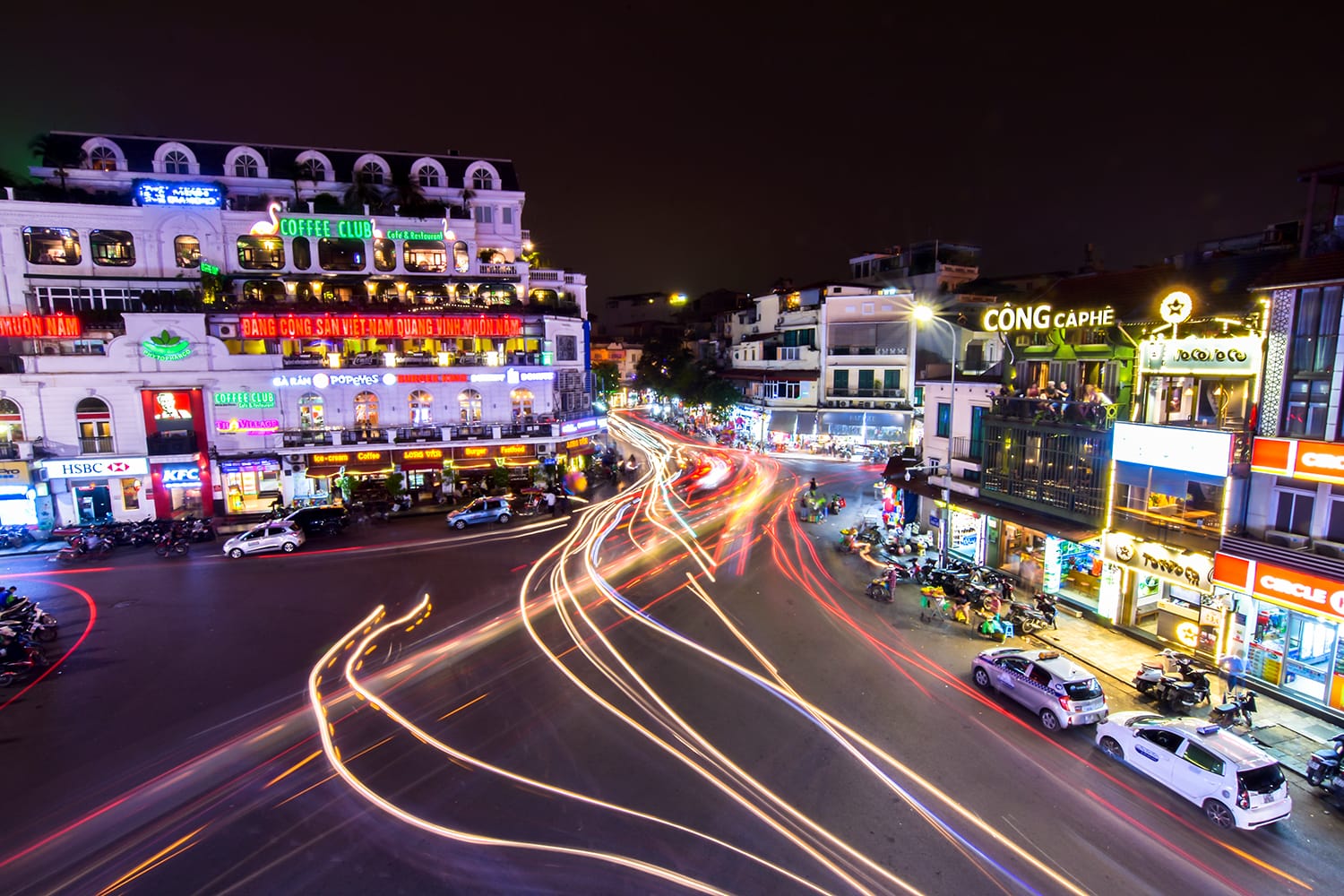 Pattrayut / shutterstock.com
Pattrayut / shutterstock.com
Day 2 in Hanoi
Now that you’ve seen some of the more central sights of Hanoi, it’s time to venture a little further from the city centre. There’s still plenty more of Hanoi waiting for you to explore.
Tran Quoc Pagoda
Hanoi is home to many temples and shrines but one of the city’s most important is the Tran Qouc Pagoda. Sitting out by West Lake, this is the oldest Buddhist shrine in Hanoi with a history that stretches back to the 6th century. The temple moved away from its original spot along the Red River and now sits across several islands by West Lake. To reach the shrine, you must first cross a causeway which links the islands with the shores of the lake.
Due to its advanced age, some pagodas, like the shrine’s tallest, have had to be reconstructed, but many are still originals from the 17th century. As you go around, take special note of the carvings in the shrines, as well as the various symbols used. Be sure to also respect the local and religious customs when you visit, as this is still very much an active shrine, with monks who live there.
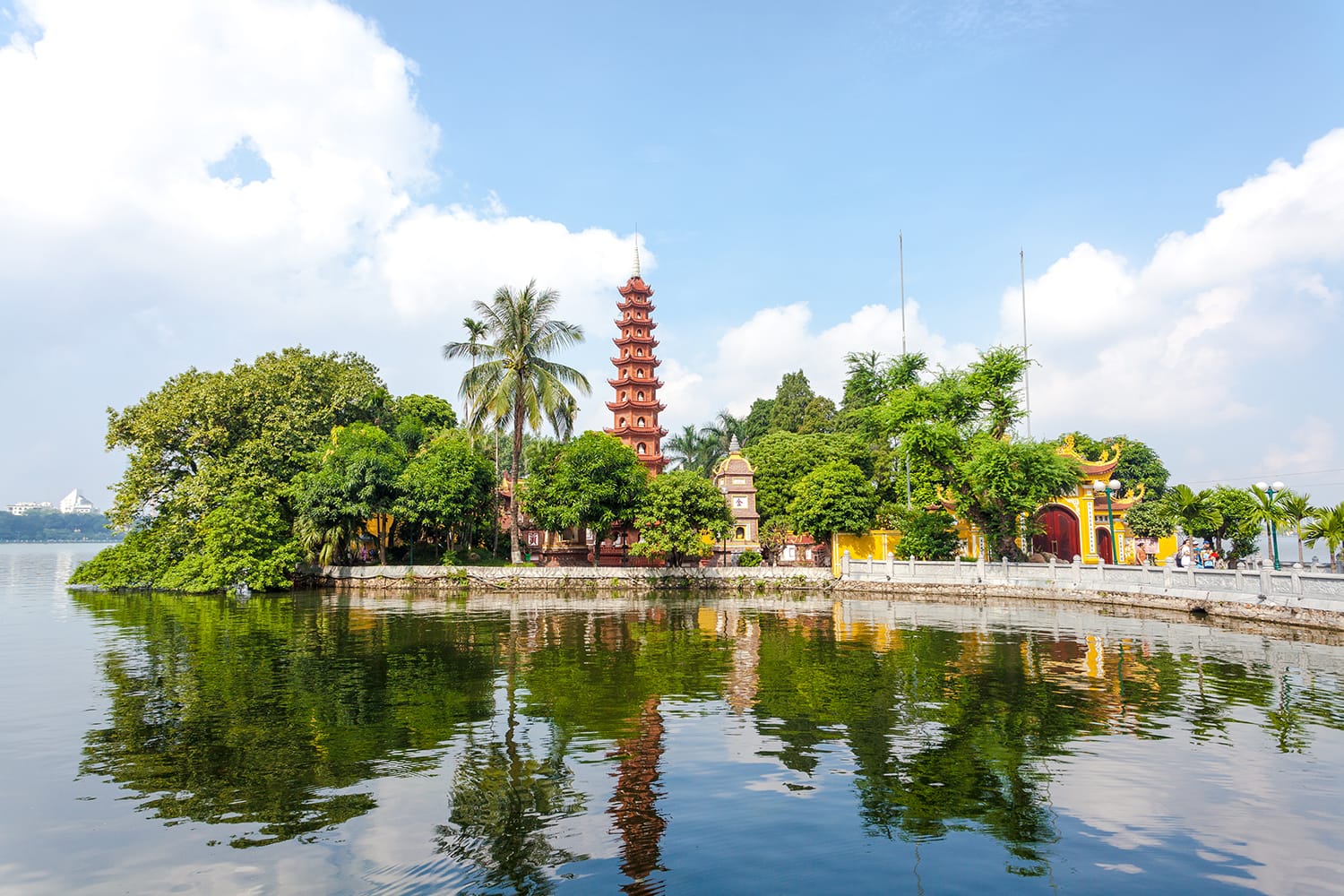 Tony Duy / shutterstock.com
Tony Duy / shutterstock.com
Ho Chi Minh Mausoleum and Museum
In all of Vietnam there is no greater public figure than the revolutionary leader Ho Chi Minh. After leading the Vietnamese independence movement, he became the communist leader and President of the Democratic Republic of Vietnam. Several years after his death, the Ho Chi Minh Mausoleum was constructed to be his final resting place. To this day, the body of the former leader can be seen by visitors to the mausoleum inside a glass enclosure protected by a full honor guard.
Not far from the mausoleum, is the Ho Chi Minh Museum, where visitors can explore exhibits on the life and work of Ho Chi Minh. The displays also detail the history of the Vietnam revolution, as well as the socialist philosophy that Ho Chi Minh promoted. Behind the mausoleum you can also see Ho Chi Minh’s Stilt House, a humble house where the revolutionary leader lived on occasion. Set by a small pond and built in a traditional style, the house supports Ho Chi Minh’s image as a man of the people.
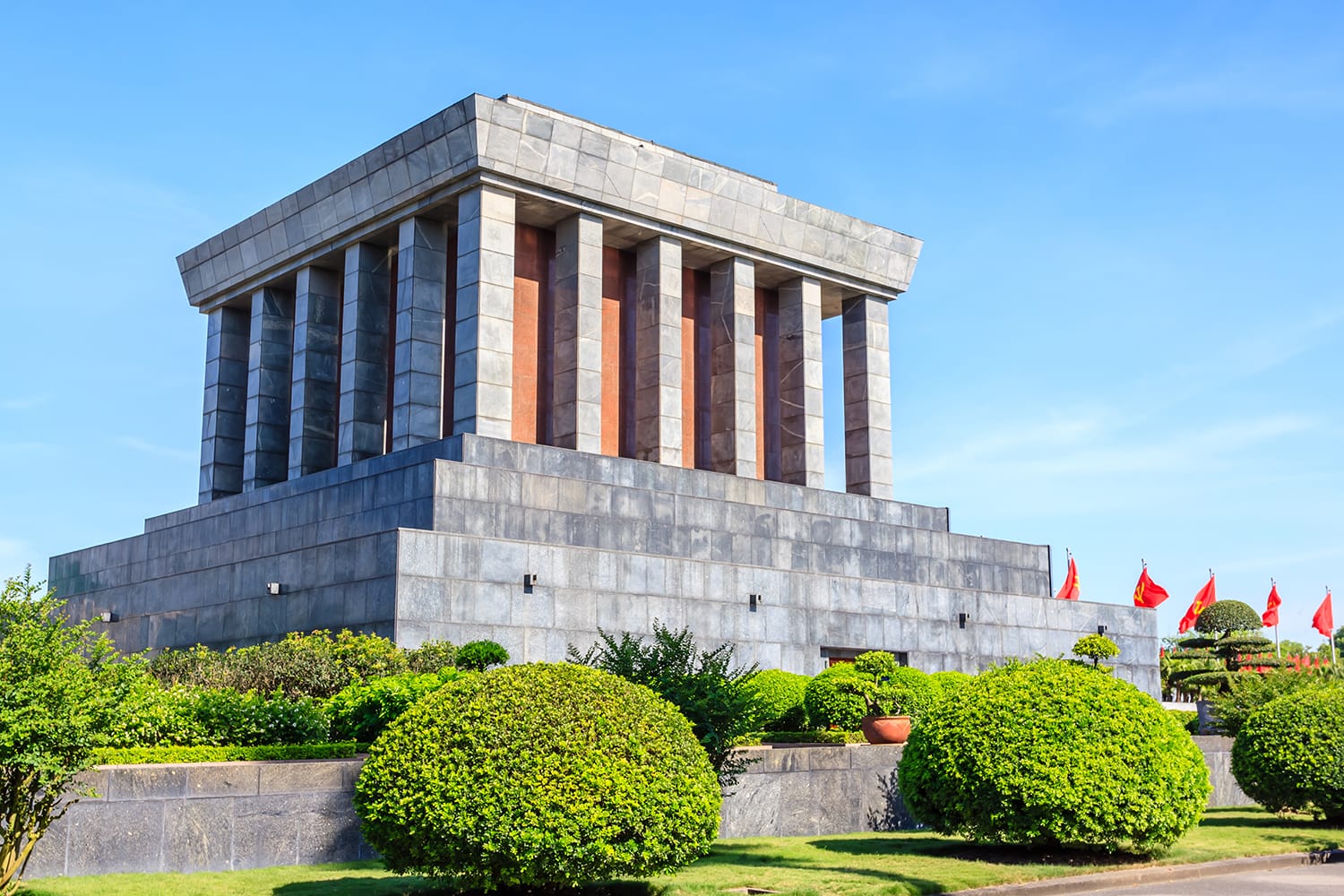 Aoshi VN / shutterstock.com
Aoshi VN / shutterstock.com
One Pillar Pagoda
Tucked around the corner from the Ho Chi Minh Museum, the One Pillar Pagoda is a small but fascinating landmark. Built to resemble a lotus flower, the pagoda rests on a single pillar – as its name suggests – in the middle of a pond. Dating from the 11th century, it’s considered one of Vietnam’s most important temples and is the focus of various local legends tied to ancient Emperors and even Buddha. It’s seen its fair share of history too, so despite how unassuming it may seem, there’s a lot to be said about this picturesque pagoda.
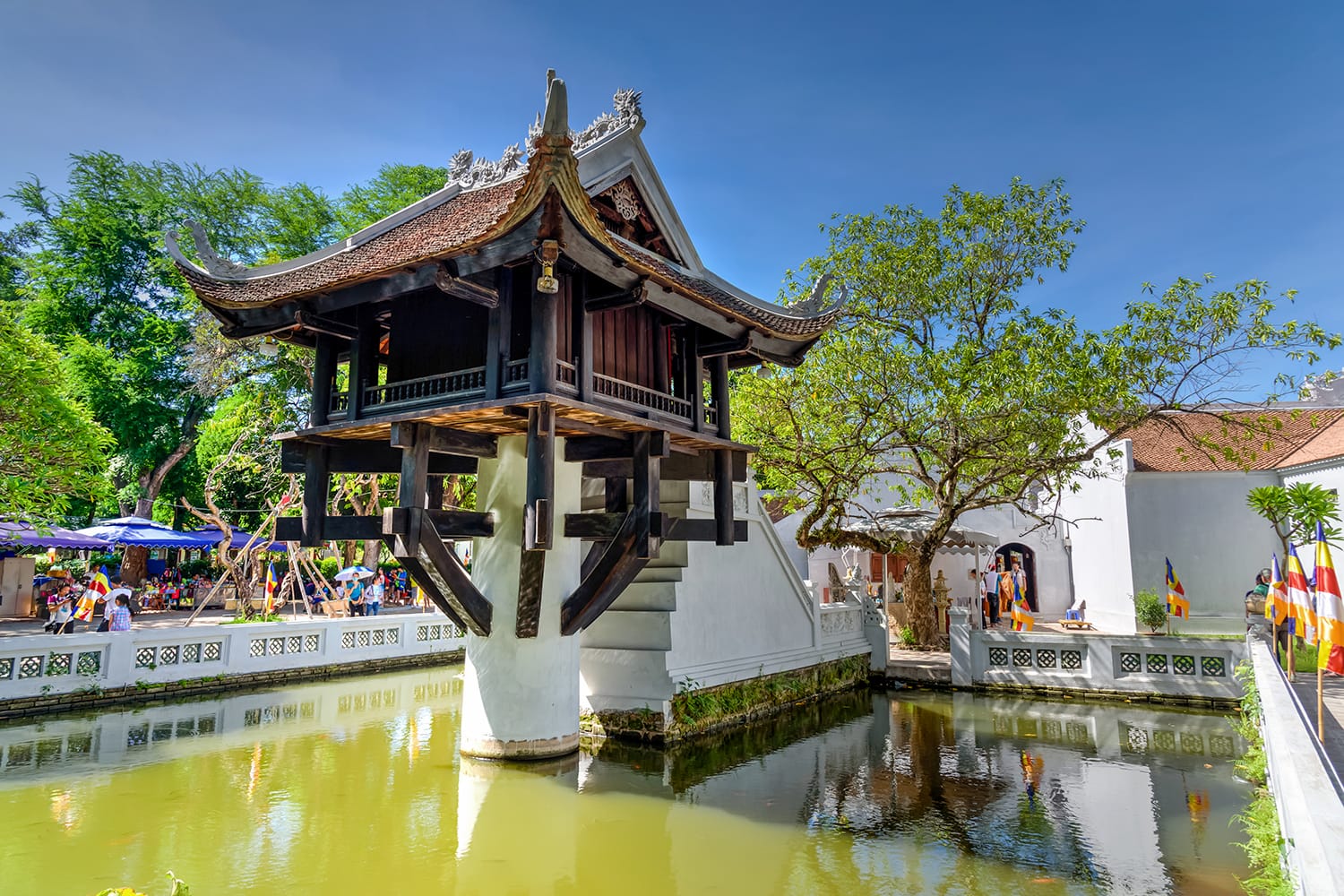 Trong Nguyen / shutterstock.com
Trong Nguyen / shutterstock.com
Hanoi Botanical Garden
Sprawling out behind both the Ho Chi Minh Mausoleum and the One Pillar Pagoda lies the Hanoi Botanical Garden, a stop well worth a look since you’re already there. This lovely park centers on several small lakes, with walking trails taking you past all sorts of trees and plants. At times you may find lanterns strung up around the place, but more often than not you’ll spot locals making use of this recreational green space.
Huu Tiep Lake
Your next stop on this side of the city involves a bit exploring down side-streets not far from the Botanical Garden. That’s because you’re in search of an iconic sight in Hanoi, that of wreckage from a downed US B-52 bomber breaking the surface of Huu Tiep Lake. Yet another reminder of the Vietnam War, there’s a small plaque by this lake which explains the story behind the wreckage. Even with that explanation it can be hard to wrap your head around the sight of normal residential life circling this reminder of war.
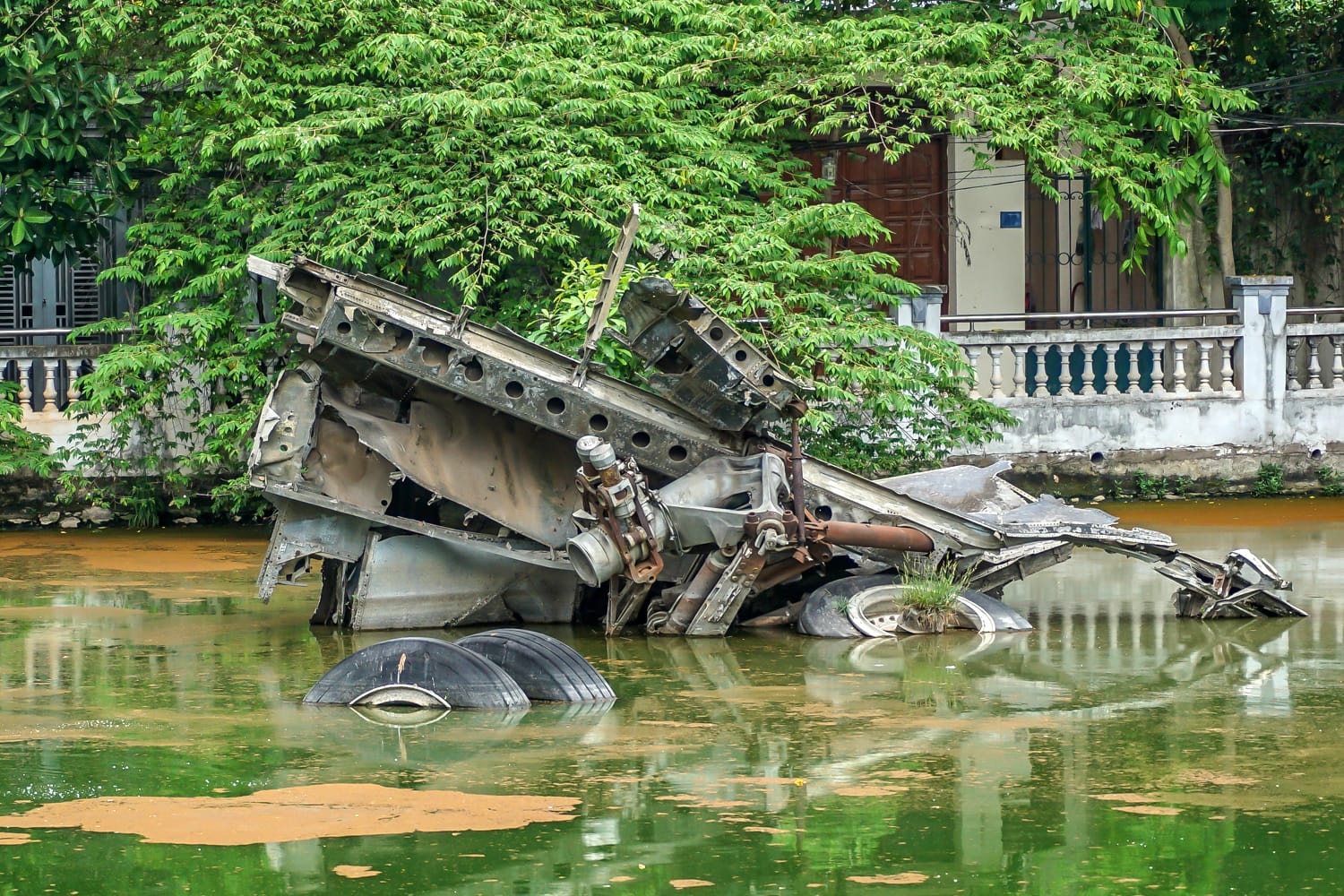 nbnserge / shutterstock.com
nbnserge / shutterstock.com
Vietnam Military History Museum
For more history on the wars in Vietnam and weapons used in the conflicts, head over to the giant Vietnamese flag flying over the Vietnam Military History Museum. Sitting under the Flag Tower of Hanoi, a large collection of military vehicles and weapons sit in the central courtyard of this museum. This includes several fighter planes, a helicopter, and even the tank that rolled through the gates of the Presidential Palace in Saigon to signal the end of the Vietnam War in 1975. Inside the museum exhibits, you can see art from past wars and read accounts by those who fought against the French and the US in the 20th century.
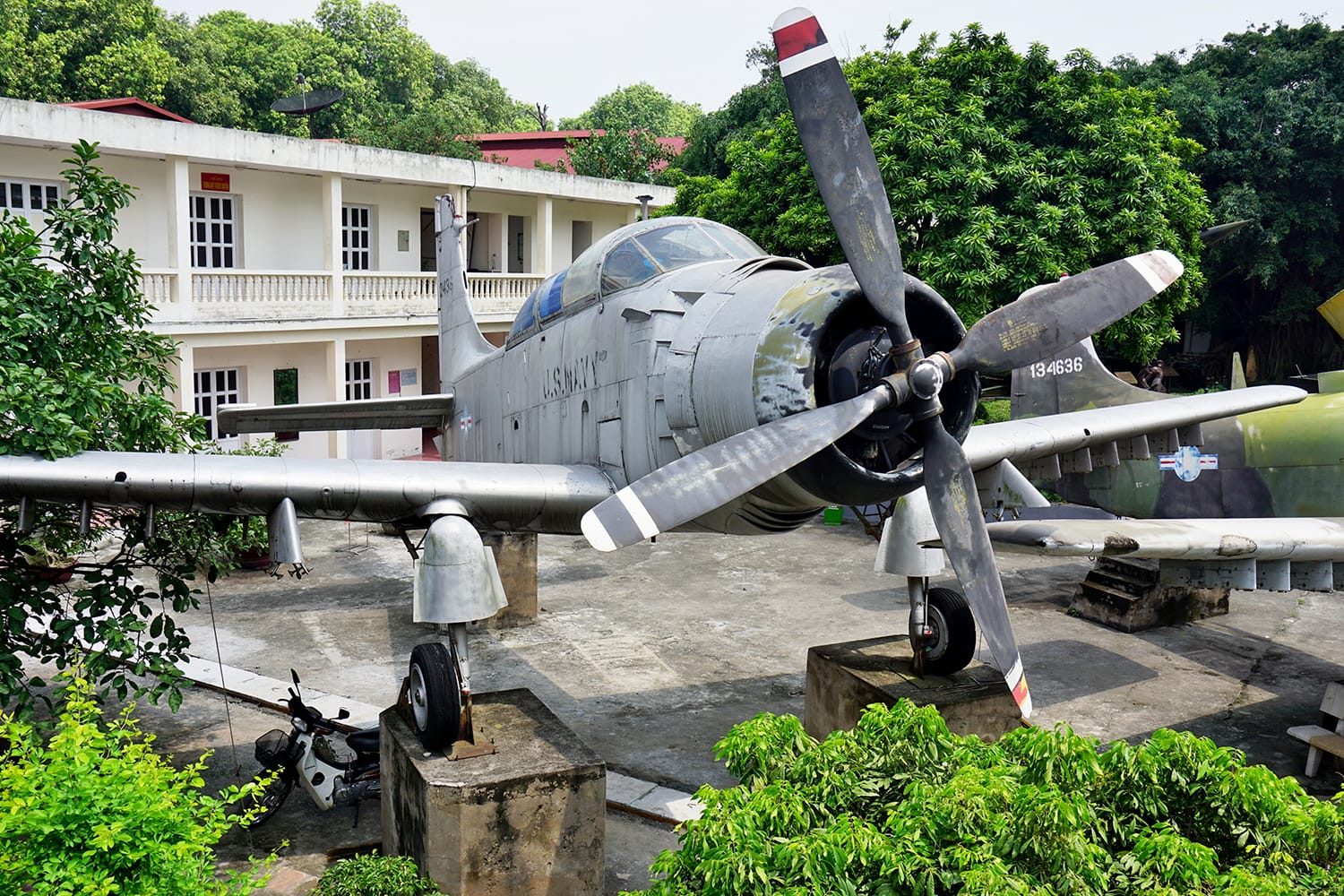 EQRoy / shutterstock.com
EQRoy / shutterstock.com
Thăng Long Imperial Citadel
Next, it’s just a short walk around the corner to the only UNESCO world heritage site in Hanoi, the Thăng Long Imperial Citadel. For 800 years this citadel was home to the royal court of Vietnam and while many structures and buildings from Hanoi’s royal days have been lost, this citadel still stands proud. Visiting the citadel, you can not only walk around its fortifications but also inside where there’s a museum with displays on various archaeological finds from excavations on the site. Plus, there are displays there which will show you what the royal court would have looked like during the height of its power.
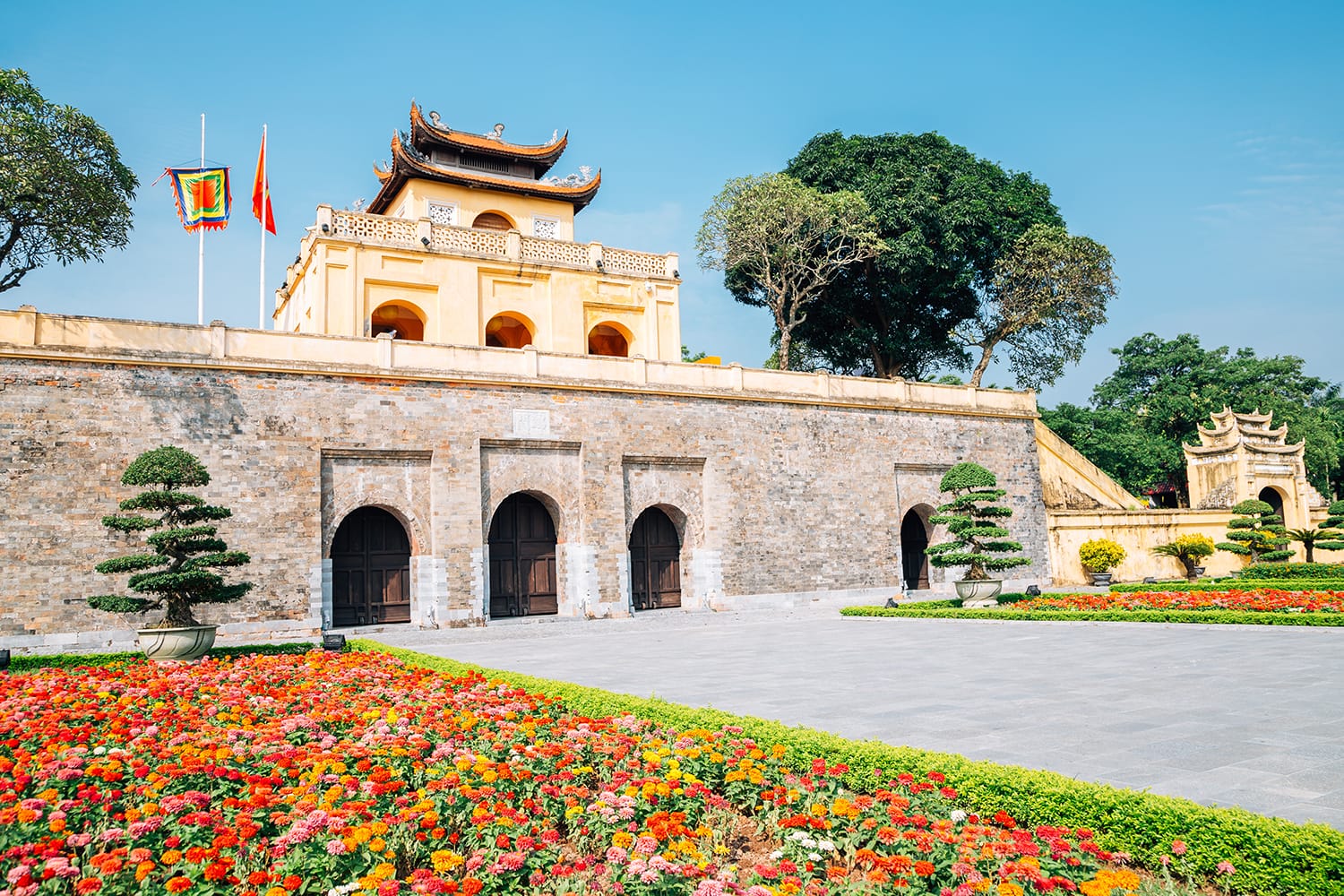 Sanga Park / shutterstock.com
Sanga Park / shutterstock.com
Hanoi Street Food
While in Vietnam there’s no way you can miss experiencing some delicious local dishes. One way to do this is just choose a restaurant with plastic chairs and tables by the road and try your luck with pho, com ga, and bun cha. However, if you really want to try a nice variety of dishes and have someone explain what you’re eating and why it’s special, consider taking a street food walking tour.
 Stormy Night / shutterstock.com
Stormy Night / shutterstock.com
Day 3 in Hanoi
After two days of sightseeing around Hanoi, you’ve had the opportunity to see what makes Hanoi so interesting. But what about the rest of northern Vietnam? While we could discuss ideas for different day trips from Hanoi, there’s really only one region close to Hanoi that you should be thinking about, and that is Ninh Binh.
This province lies to the south of Hanoi and is home to a curious mix of rural areas and stunning natural landscapes. The province of Ninh Binh offers everything from limestone mountains to rice fields, all the while boasting landmarks with centuries of history or great religious significance. Together, this scenic landscape has earned part of the province, the Trang An Landscape Complex, a spot on the UNESCO world heritage list. No matter which parts of Ninh Binh you decide to see, you’re bound to come away impressed.
Recommendation: If you don’t want to adventure out on your own, consider booking a guided tour to Ninh Binh. This small group tour for example takes you to all the best spots including Tam Coc, Hoa Lu, and Mua Cave.
Tam Coc
If there’s a chief tourist attraction among the landscapes of Ninh Binh, then it’s the landscape of Tam Coc. Advertised as “Ha Long Bay but on land”, this part of Ninh Binh is defined by its river which courses between jagged limestone mountains, past rice terraces, and through three separate flooded caves. Visitors see this beautiful place by boat cruise, floating along in a small traditional sampan. You’ll pass by immense mountains and spy temples among lush rice fields.
 Efired / shutterstock.com
Efired / shutterstock.com
Trang An
At a quick glance, Trang An sounds an awful lot like Tam Coc. A visit involves a boat ride along a river through caves within karst mountains. But there are several key differences which may make you choose Trang An over Tam Coc. For one, rather than visiting three caves, your cruise down the river takes you through eight flooded caves. The other big difference is that Trang An is simply less well-known than Tam Coc, so you’ll find fewer other tourists about and a much quieter, more peaceful experience as a result.
 Pelikh Alexey / shutterstock.com
Pelikh Alexey / shutterstock.com
Hang Mua
Ninh Binh is home to plenty of limestone mountains but one of the most spectacular is Hang Mua Peak. If you want to see as much of Ninh Binh Province as possible in just one go then the views from this peak are the place to be. To reach the top you first have to climb 500 steps which snake their way up to the temple. But once you’re at the top, you’ll be rewarded with panoramic views below of Tam Coc and much of Ninh Binh.
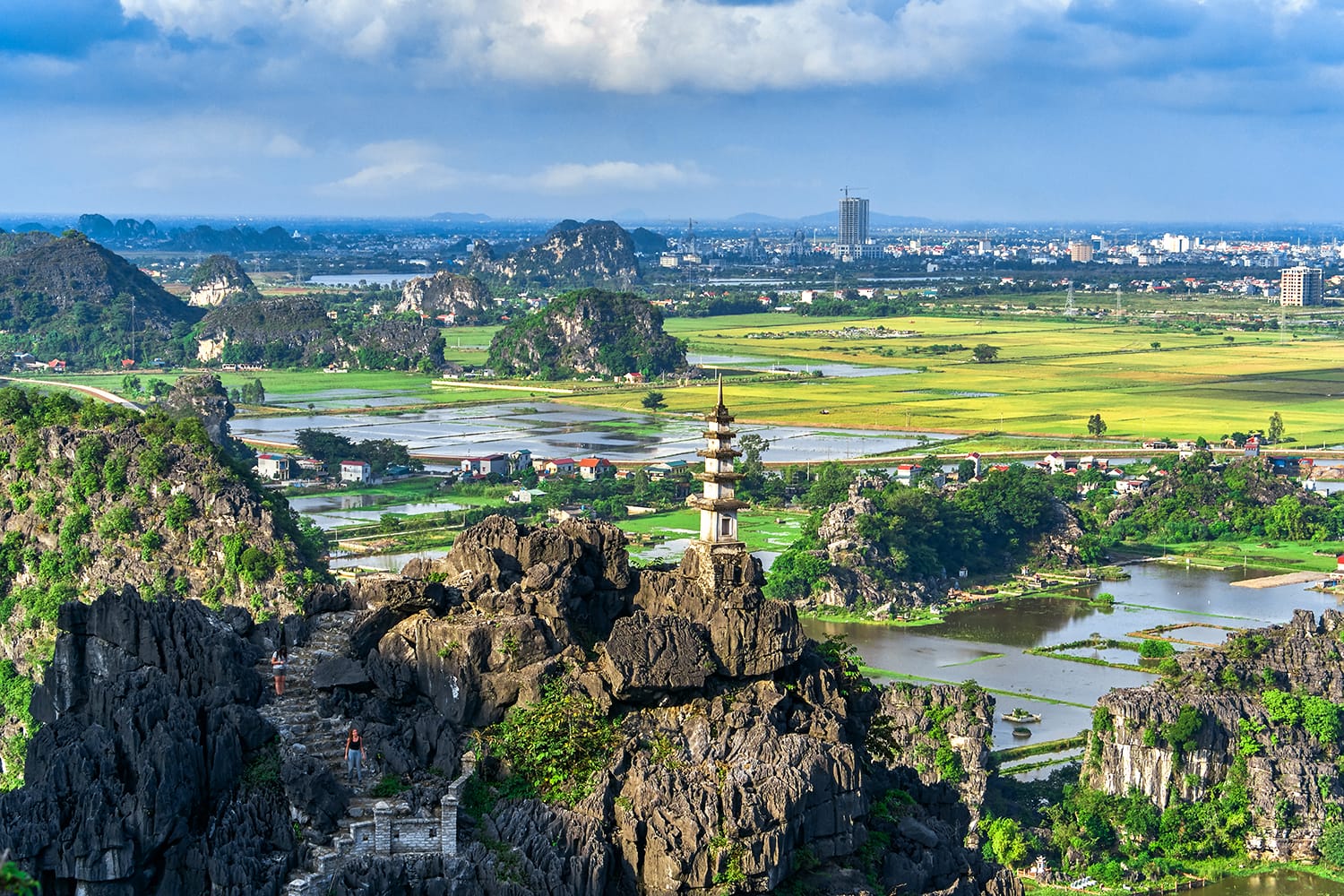 Pelikh Alexey / shutterstock.com
Pelikh Alexey / shutterstock.com
Bich Dong Pagoda
There’s no shortage of temples in this part of Vietnam, with one of the most popular being the ancient temple complex of Bich Dong. Upon passing through its gate not far from Tam Coc, you soon realize that this complex is actually three pagodas which have been carved into the side of a limestone mountain.
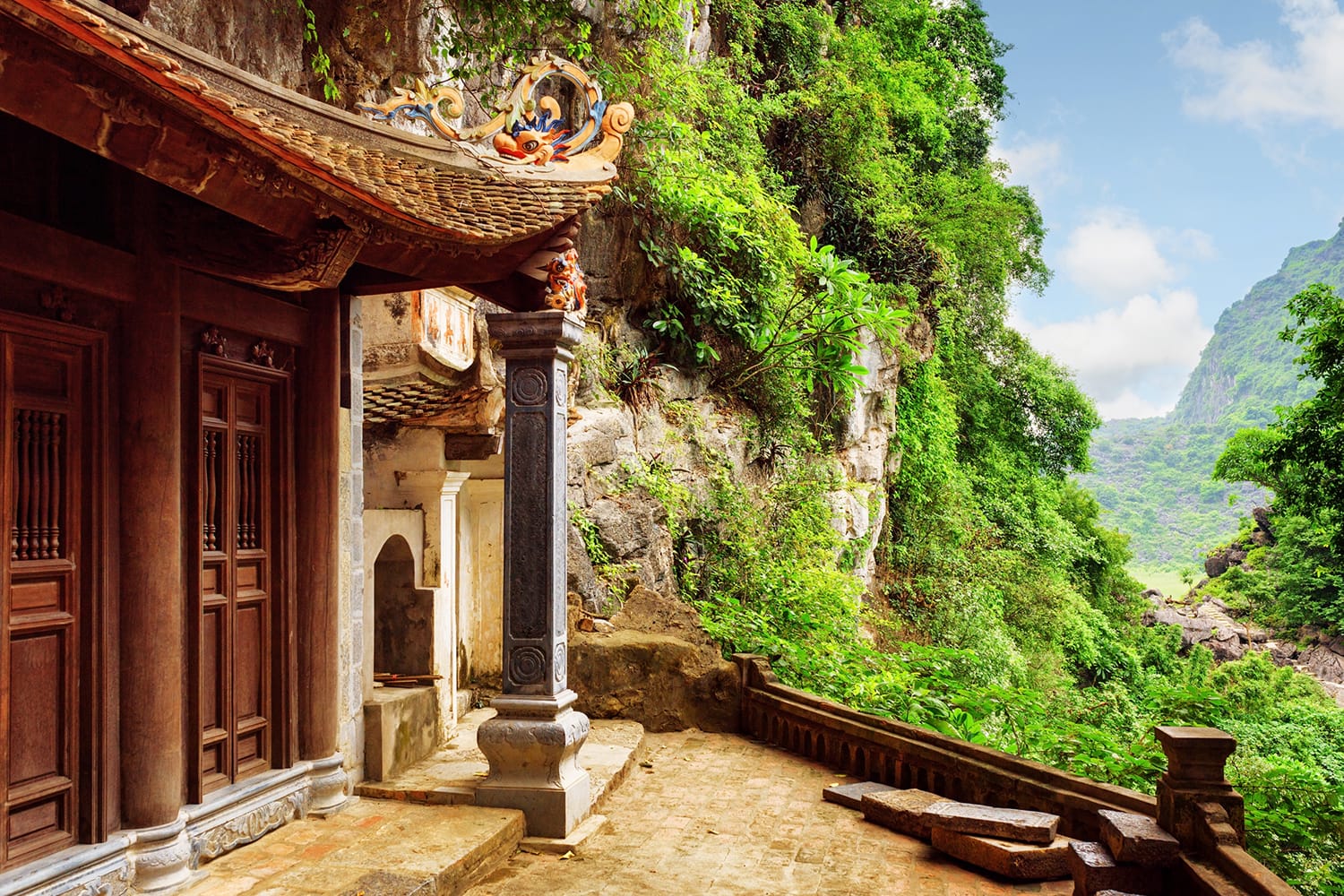 Efired / shutterstock.com
Efired / shutterstock.com
Bai Dinh Temple
The other major temple complex of Ninh Binh not to miss is Bai Dinh Temple, both for its religious importance but also the records it breaks. This is because Bai Dinh Temple is not only home to the largest Buddhist temple complex in the country but the Bai Dinh Pagoda is also the country’s biggest. No surprise then that this complex has become quite a popular pilgrimage destination for Buddhists in Vietnam.
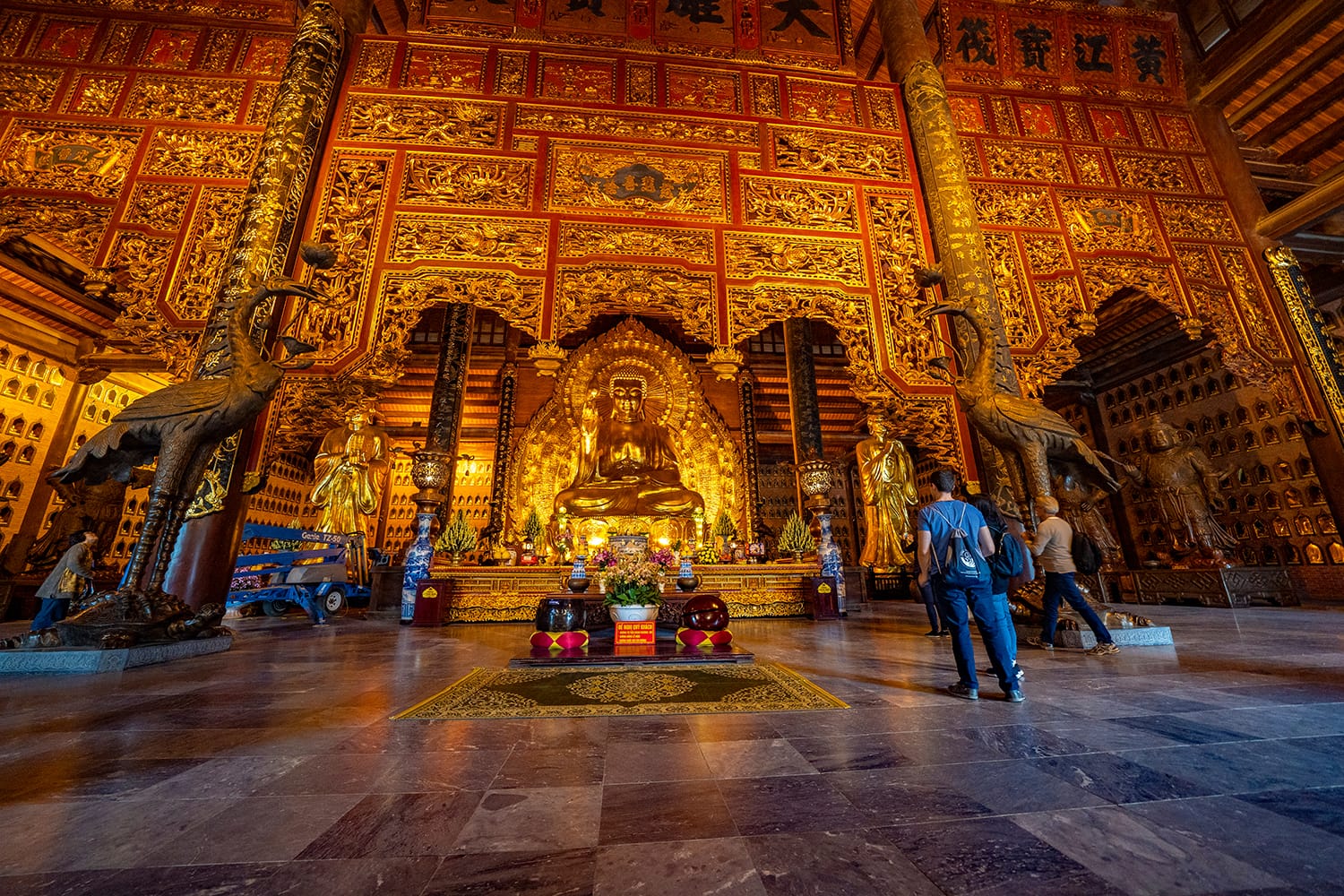 Ungvari Attila / shutterstock.com
Ungvari Attila / shutterstock.com
Hoa Lu
At one time in Vietnam’s history, the capital city of the Vietnamese Empire was found in the Ninh Binh province, in a city called Hoa Lu. Starting with the Đinh dynasty, the city was the capital during the 10th and 11th centuries. Today though, there is no city, just some remains of what was once the center of an empire. Sitting in a valley of Ninh Binh, visitors to Hoa Lu will see gateways, temples, and fortifications from this period in Vietnamese history. The temples inside are mostly dedicated to the different emperors of the capital, but one of the most interesting is the Thiên Tôn Cave temple as it has both Buddhist and Daoist elements to it.
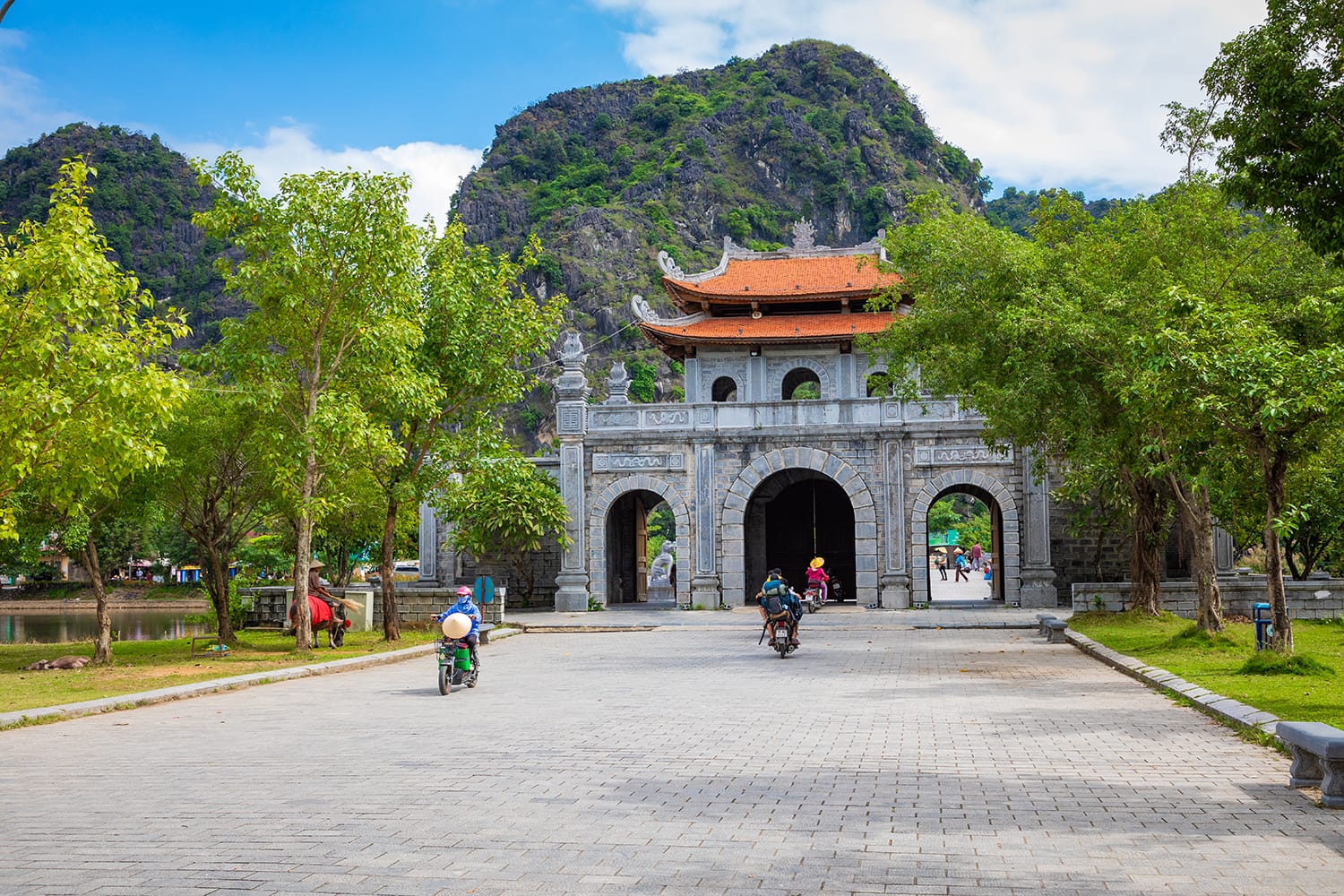 Curioso / shutterstock.com
Curioso / shutterstock.com
There should be no doubt in your mind now that 72 hours in Hanoi will let you experience so much of this Vietnamese city. Whether you’re a fan of food, history, or culture, Hanoi’s got something for you.
Planning a trip to Saigon or Hue as well? Check out our Saigon itinerary or Hue itinerary next.















![Toni Kroos là ai? [ sự thật về tiểu sử đầy đủ Toni Kroos ]](https://evbn.org/wp-content/uploads/New-Project-6635-1671934592.jpg)


